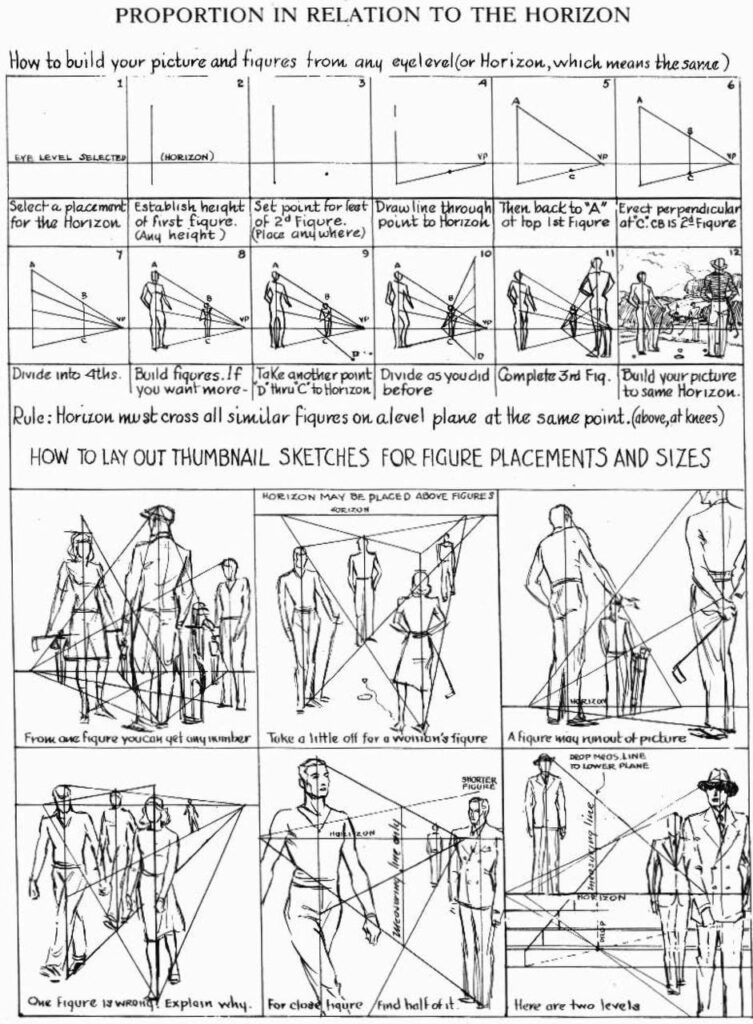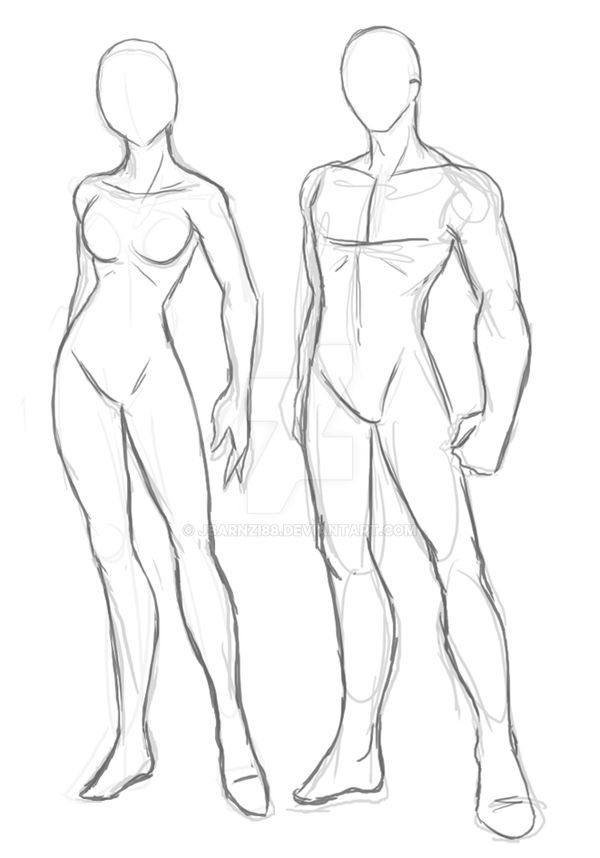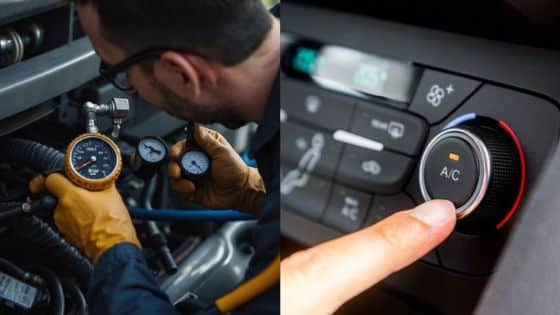Drawing body poses is an essential skill for artists, as it helps them accurately capture the human figure and convey emotions and actions through their artwork. Mastering the art of body pose drawing requires an understanding of human anatomy and proportion, as well as practice and persistence. When starting out, it is crucial for artists to study and observe the human body to gain an understanding of the underlying structure and how different parts move and interact with each other.

As artists progress in their pose drawing journey, they will start exploring advanced techniques and refining their skills, which will allow them to create more dynamic and expressive artwork.


Utilizing various tools and resources can enhance an artist’s understanding of body poses and give them a broader perspective on how to create their own unique style. Furthermore, experimenting with different artistic styles and ideas can help push an artist’s abilities and creativity to new heights.
Key Takeaways
- Understanding human anatomy and proportion is crucial for capturing body poses accurately
- Advanced techniques and continuous practice will help artists create more dynamic and expressive artwork
- Exploring various tools, resources, and artistic styles can enrich an artist’s pose drawing abilities and inspire creativity.
Fundamentals of Drawing Body Poses

Drawing body poses can be challenging, but with the right understanding of proportions, line of action, and anatomy basics, it can be made simpler. This section will discuss these three crucial elements which make up the foundation for mastering body pose drawings.
Understanding Proportions
To accurately depict a human figure, it is important to grasp the concept of proportions. The human body follows certain proportional relationships, which can serve as a guide for artists. For instance, the body’s height is typically around eight head lengths when standing straight and flat with the head held erect source.
Some general proportional guidelines:
- The space between the eyes is about one eye-width.
- The elbow is usually at the waist level.
- The wrist is roughly at the crotch level.
Using these basic measurements and more, artists can create more realistic and accurate body pose drawings.
Mastering Line of Action
The line of action is a crucial and fundamental element in capturing dynamic poses. It represents the main motion or flow of the figure, from head to toe, and helps to guide the overall composition. By following this line, artists can create more fluid and dynamic drawings of the human figure source.

To effectively use the line of action in body pose drawings, consider these tips:
- Find the main movement or direction of the pose being drawn
- Draw a simple and fluid line to represent this movement
- Build the rest of the figure around this line, maintaining the flow and energy it provides
Anatomy Basics
Understanding basic anatomy is essential for capturing the human figure accurately and realistically. One approach is to begin by studying the skeletal structure, identifying major bones and joints that determine the body’s range of motion. Next, move on to learning about major muscle groups that play a role in shaping the form and posture of the figure source.

To study anatomy effectively, consider:
- Using anatomy books or online resources specifically designed for artists.
- Observing the human body in real life or through photographs.
- Regularly making sketches and drawings of the human body to sharpen skills and improve understanding.
In conclusion, mastering the fundamentals of drawing body poses requires a good understanding of proportions, line of action, and anatomy.


By focusing on these three elements, artists can greatly improve their ability to capture dynamic and realistic body poses in their drawings.
Advanced Techniques in Pose Drawing



Dynamic Poses
Dynamic poses can bring life and movement to your drawings, capturing the energy and fluidity of the human body. To create realistic dynamic poses, focus on the following elements:
- Balance: Consider the center of gravity and how the body parts distribute the weight.
- Gesture lines: Use long, flowing lines to convey the action and direction of movement.
- Overlapping forms: Show the interaction between limbs and the body to create a sense of depth and motion.
Experiment with a variety of action poses and use reference photos or live models to get a better understanding of how the human body moves.
Foreshortening and Perspective
Foreshortening is an essential technique for creating convincing poses in perspective. It involves the perceived distortion of an object’s dimensions based on the viewer’s angle.


In pose drawing, mastering foreshortening will bring a sense of depth and realism to your artwork. Here are some key points to keep in mind:

- Determine the viewer’s eye level: Establishing a horizon line and vanishing points will help guide your foreshortening.
- Overlap and size variation: Objects closer to the viewer appear larger, while those further away look smaller. Use this principle when drawing limbs and body parts in perspective.
- Draw through the form: Visualize and sketch the complete structure of the body, even parts hidden from view. This will help you maintain accurate proportions and perspective.
Practice drawing foreshortened figures from various angles to hone your skills.
Drawing Different Body Types

Incorporating a variety of body types in your pose drawings adds interest and diversity to your work. Pay attention to the following aspects when exploring different body types:
- Proportions: Different body types have unique proportions. Familiarize yourself with the basic ratios and adjust them based on the specific figure.
- Silhouette: The overall shape of the body is key to conveying its type. Exaggerate or simplify certain aspects, such as broad shoulders or rounded hips, to emphasize the body type.
- Muscle and fat distribution: Understand how muscle and fat affect the body’s appearance. Consider factors like the placement of body fat or the definition of muscle groups.
Studying anatomy and observing people in real life or through reference materials will help you develop a more diverse and accurate understanding of various body types.
Practicing and Improving Your Skills

For artists looking to hone their figure drawing skills, consistent practice is essential. Different techniques, such as gesture drawing, figure drawing, and anatomy drawing, each provide unique approaches to developing and improving the ability to capture the human form. Incorporating these methods in regular practice sessions can greatly benefit artists in their quest for mastery.
Gesture Drawing

Gesture drawing is a foundational practice for artists, focusing on capturing the essence of a pose rather than the details. This technique helps artists understand the flow and movement of the body, training their eye to see the most important aspects of a pose.




To effectively practice gesture drawing, artists should set a timer and sketch the subject quickly, sometimes in as short as 10-30 seconds per pose. This rapid approach forces artists to simplify and prioritize the body’s fluidity, ultimately helping them improve their speed and accuracy in depicting poses.
Figure Drawing

While gesture drawing focuses on fluidity, figure drawing dives deeper into the details of the human form. In figure drawing, artists aim to create accurate, proportional representations of their subjects. This practice requires patience and attention to detail, as artists study the subject’s posture, alignment of limbs, and the interplay of light and shadow.

Sessions can last from a few minutes to several hours, allowing artists to explore subtleties in form and structure. Regular practice of figure drawing will help artists refine their skills and enhance their understanding of the human body in space.
Anatomy Drawing
Anatomy drawing is the most intricate and detailed approach to capturing the human form. This technique involves a deep understanding of the body’s underlying structure—the bones, muscles, and connective tissues that work together to create natural poses. By studying and drawing each element of the human anatomy, artists can gain a comprehensive knowledge of how these components contribute to the subject’s overall appearance.

When practicing anatomy drawing, artists should begin by studying reference material, such as anatomical charts and models, to understand the underlying structures of the body.

Once familiar with these basics, artists can incorporate this knowledge into their figure drawings, allowing them to create more realistic and accurate renditions of their subjects. This practice not only improves their technical skills, but also deepens their appreciation for the complexity and beauty of the human form.

By incorporating gesture drawing, figure drawing, and anatomy drawing into their regular practice routine, artists can steadily improve their ability to capture the intricacies of the human form. Each technique offers a unique perspective, and combining these approaches will surely elevate an artist’s figure drawing skills to new heights.
Tools and Resources for Pose Drawing

Online Libraries and References
There are numerous online libraries and resources available for artists looking to improve their pose drawing skills. These repositories offer a vast collection of pose reference images and illustrations, allowing artists to study and practice drawing various body poses. Some popular pose library websites include PoseSpace and Line of Action. These websites provide high-quality photographs of models, covering various poses, angles, and lighting conditions, making them an indispensable resource for artists at any skill level.
Drawing Tutorials
Drawing tutorials are another valuable resource for artists, as they provide step-by-step instructions and tips for mastering the art of drawing body poses. Many professional artists share their knowledge and techniques through YouTube channels and art blogs.

Some noteworthy YouTube channels offering pose drawing tutorials are Proko and Draw with Jazza. Additionally, online art communities like DeviantArt and ConceptArt.org offer tutorials and forums where artists can exchange ideas, discuss techniques, and provide feedback on each other’s work.
Mobile and Web Apps
In today’s digital age, several mobile and web apps are available to help artists improve their pose drawing skills. Some of these apps offer 3D models that can be customized and manipulated to create unique poses for practice, whereas others provide galleries of photographs and images for referencing.


Some popular apps in this category include Magic Poser, Pose Tool 3D, and Figurepose. These apps are designed to enhance the drawing experience, making it easier for artists to visualize and capture the intricacies of various body poses.


By utilizing these tools and resources, artists can effectively practice and refine their pose drawing skills. Whether it’s through online libraries, tutorials, or mobile apps, there are plenty of options available to help artists improve and become more confident in their ability to accurately portray the human body in various poses.
Exploring Artistic Styles and Ideas

When it comes to drawing body poses, artists may choose to explore various artistic styles and ideas. The ability to imagine and experiment with different styles can significantly enhance an artist’s repertoire and help them create unique characters and designs. This section will discuss two popular approaches: Anime and Character Design, and Realistic and Nude Models.
Anime and Character Design
Anime is a distinctive, popular, and expressive style that originated in Japan and continues to have a massive impact on the world of animation and illustration. Character design is an essential aspect of this style, as it allows artists to create distinctive personalities and appearances for their characters.
By focusing on character-design techniques, such as exaggerating certain features or giving unique fashion items to the characters, artists can make their creations stand out and resonate with viewers.


It is essential to explore various ideas when working with anime model and character design. Experimenting with poses, expressions, and clothing can help artists develop their unique touch in this artistic style. It is also valuable to study and analyze popular anime series and characters to identify the key features that make them successful, allowing the artist to incorporate similar elements in their work.
Realistic and Nude Models
Drawing realistic body poses requires a firm understanding of human anatomy, proportions, and movement. Nude models serve as an invaluable resource for artists dedicated to capturing the essence of the human body in their work. Using live models or references like photographs, artists can hone their skills by focusing on the details of the human body, including muscles, bones, and skin texture.
Working with nude models encourages artists to explore various poses, perspectives, and body types. This exploration can lead to a deeper understanding of human anatomy and help artists develop their techniques for drawing lifelike figures. Additionally, the practice of drawing nude models can also serve as a foundation for other artistic styles, providing a solid base for artists to expand upon and experiment with different ideas.




In conclusion, by exploring various artistic styles and ideas when drawing body poses, artists can enhance their skills, imagination, and creativity. Whether focusing on anime and character design or working with realistic and nude models, each approach offers unique opportunities to learn, grow, and develop as an artist.
- 59.9Kshares
- Facebook0
- Pinterest59.9K
- Twitter3
- Reddit0













